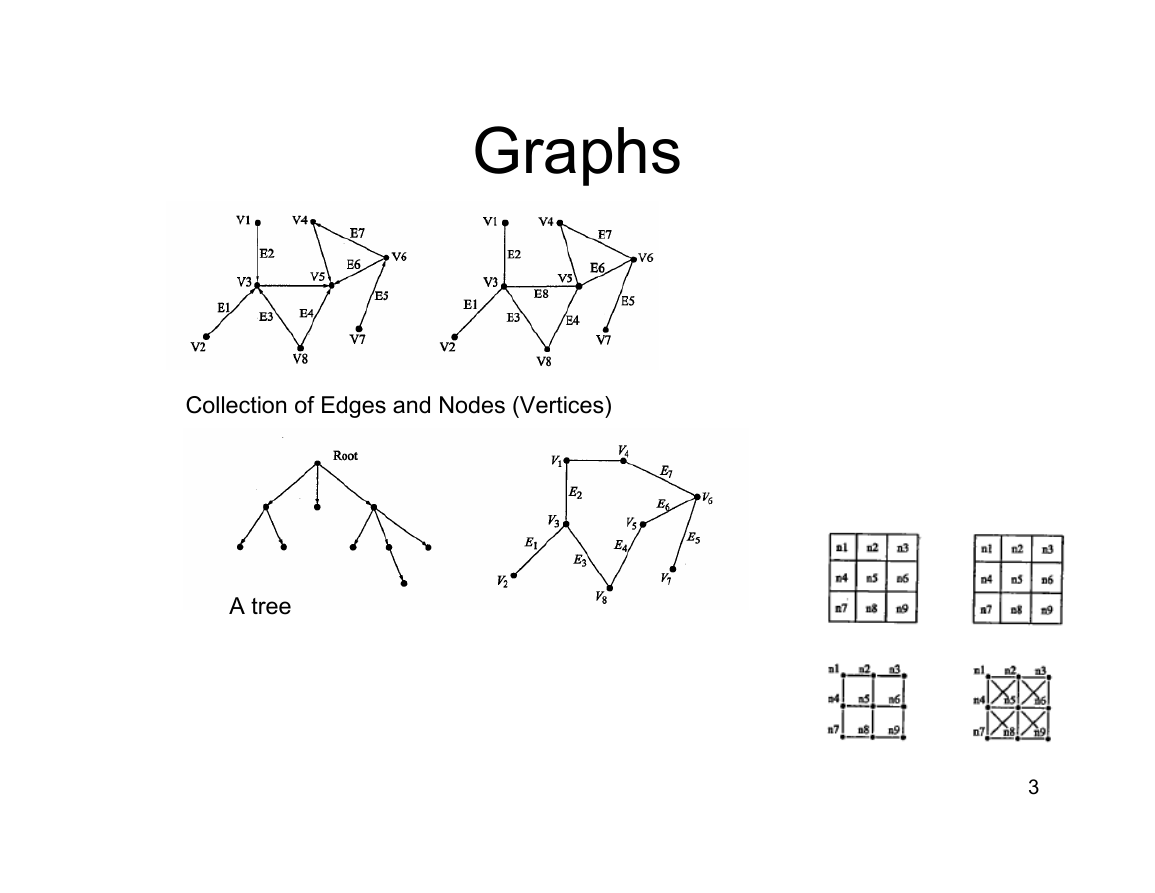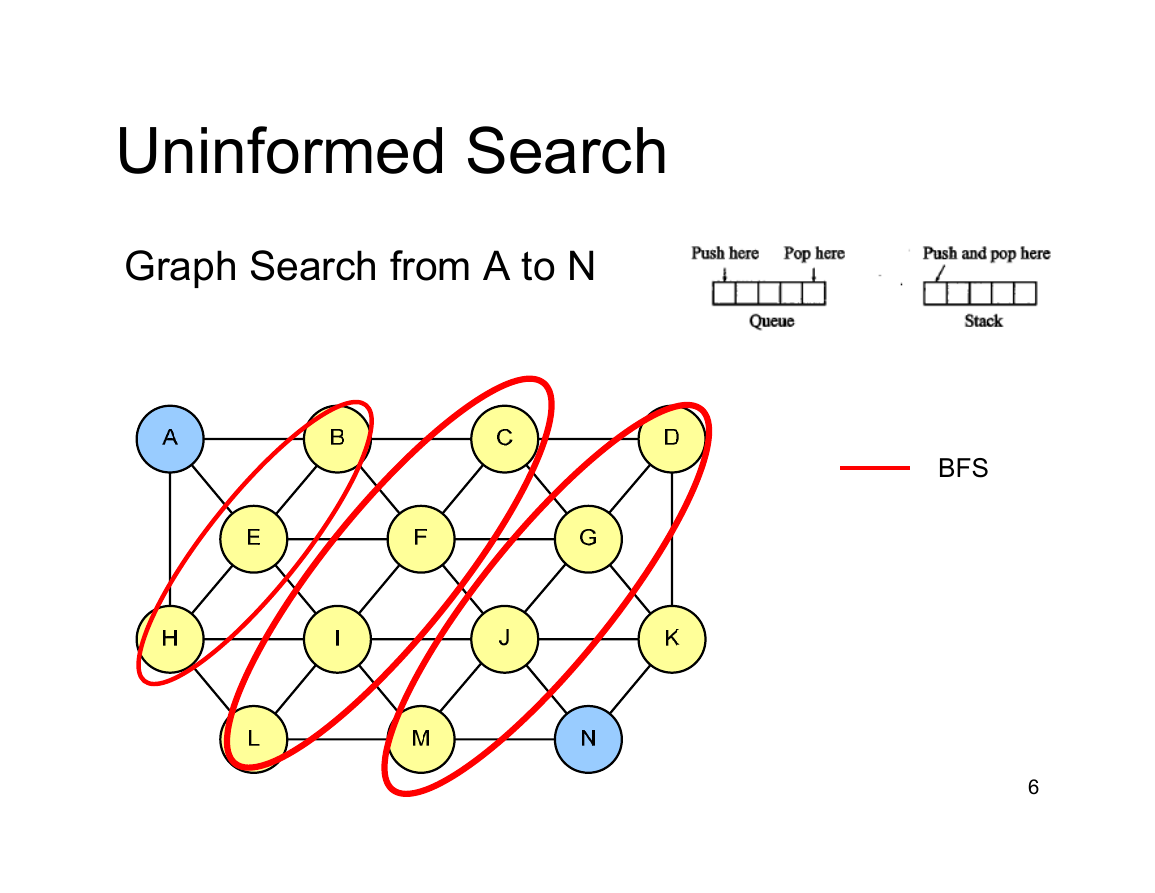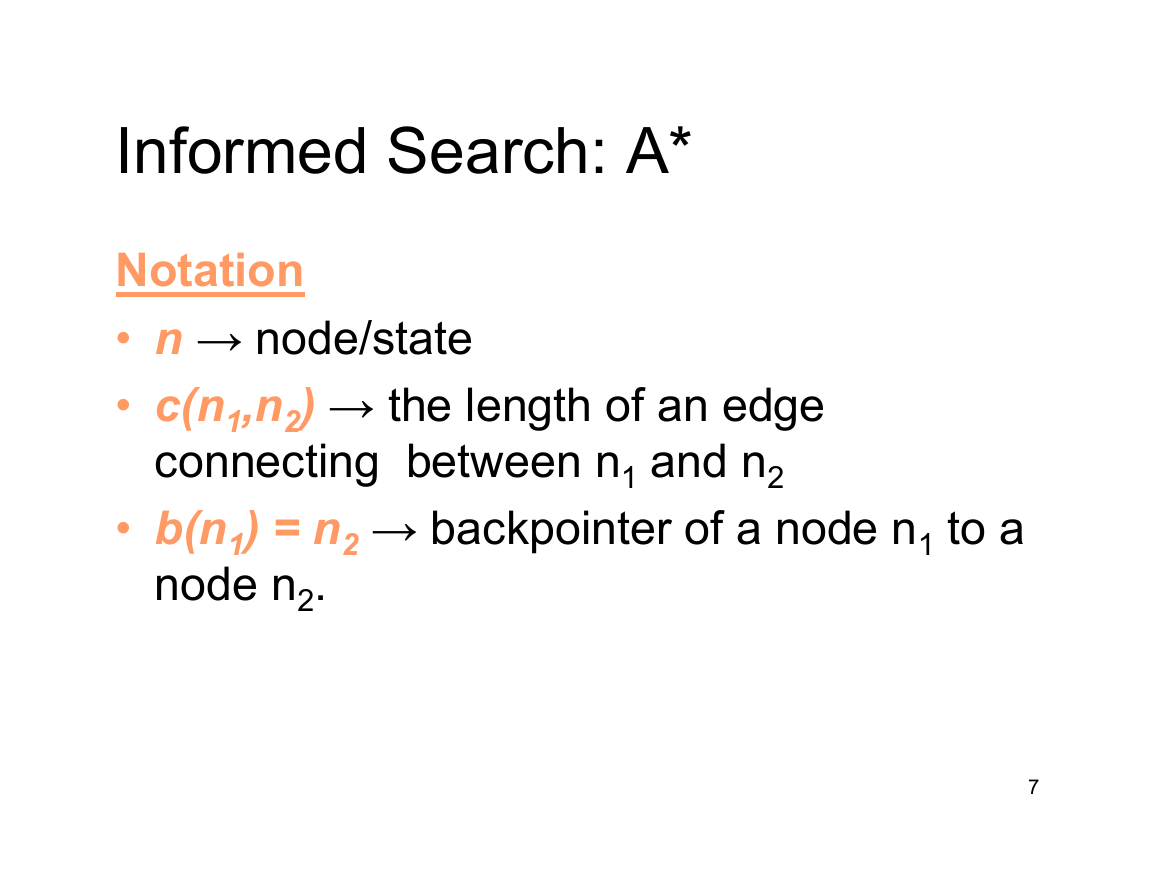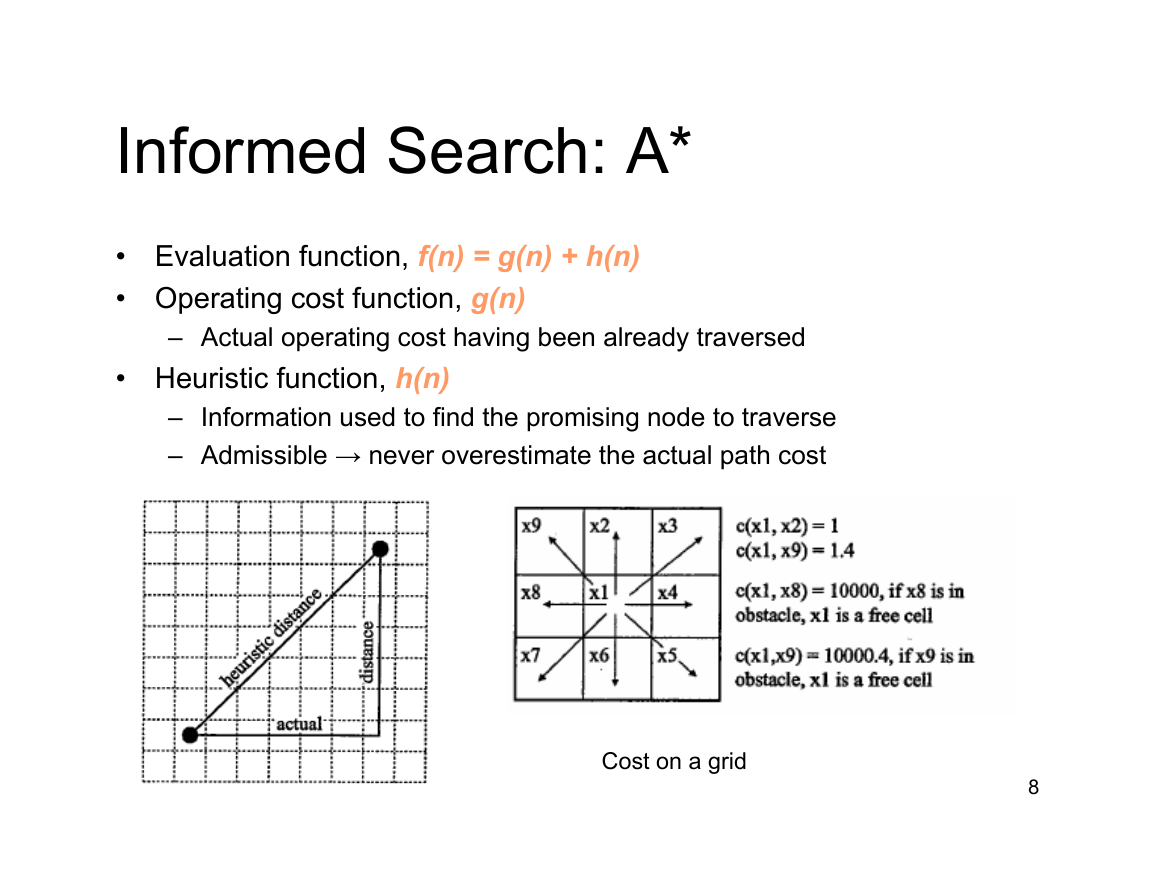Robotic Motion Planning:
A* and D* Search
Robotics Institute 16-735
http://www.cs.cmu.edu/~motionplanning
Howie Choset
http://www.cs.cmu.edu/~choset
16-735, Howie Choset with slides from Ayorkor Mills-Tettey, Vincent Lee-Shue Jr. Prasad Narendra Atkar, Kevin Tantisevi
�
Outline
• Overview of Search Techniques
• A* Search
• D* Search
• D* Lite
2
�
Graphs
Collection of Edges and Nodes (Vertices)
A tree
3
�
Search in Path Planning
• Find a path between two locations in an
unknown, partially known, or known
environment
• Search Performance
– Completeness
– Optimality → Operating cost
– Space Complexity
– Time Complexity
4
�
Search
• Uninformed Search
– Use no information obtained from the
environment
– Blind Search: BFS (Wavefront), DFS
• Informed Search
– Use evaluation function
– More efficient
– Heuristic Search: A*, D*, etc.
5
�
Uninformed Search
Graph Search from A to N
BFS
6
�
Informed Search: A*
Notation
• n → node/state
• c(n1,n2) → the length of an edge
connecting between n1 and n2
• b(n1) = n2 → backpointer of a node n1 to a
node n2.
7
�
Informed Search: A*
• Evaluation function, f(n) = g(n) + h(n)
• Operating cost function, g(n)
– Actual operating cost having been already traversed
• Heuristic function, h(n)
– Information used to find the promising node to traverse
– Admissible → never overestimate the actual path cost
Cost on a grid
8
�
















 2023年江西萍乡中考道德与法治真题及答案.doc
2023年江西萍乡中考道德与法治真题及答案.doc 2012年重庆南川中考生物真题及答案.doc
2012年重庆南川中考生物真题及答案.doc 2013年江西师范大学地理学综合及文艺理论基础考研真题.doc
2013年江西师范大学地理学综合及文艺理论基础考研真题.doc 2020年四川甘孜小升初语文真题及答案I卷.doc
2020年四川甘孜小升初语文真题及答案I卷.doc 2020年注册岩土工程师专业基础考试真题及答案.doc
2020年注册岩土工程师专业基础考试真题及答案.doc 2023-2024学年福建省厦门市九年级上学期数学月考试题及答案.doc
2023-2024学年福建省厦门市九年级上学期数学月考试题及答案.doc 2021-2022学年辽宁省沈阳市大东区九年级上学期语文期末试题及答案.doc
2021-2022学年辽宁省沈阳市大东区九年级上学期语文期末试题及答案.doc 2022-2023学年北京东城区初三第一学期物理期末试卷及答案.doc
2022-2023学年北京东城区初三第一学期物理期末试卷及答案.doc 2018上半年江西教师资格初中地理学科知识与教学能力真题及答案.doc
2018上半年江西教师资格初中地理学科知识与教学能力真题及答案.doc 2012年河北国家公务员申论考试真题及答案-省级.doc
2012年河北国家公务员申论考试真题及答案-省级.doc 2020-2021学年江苏省扬州市江都区邵樊片九年级上学期数学第一次质量检测试题及答案.doc
2020-2021学年江苏省扬州市江都区邵樊片九年级上学期数学第一次质量检测试题及答案.doc 2022下半年黑龙江教师资格证中学综合素质真题及答案.doc
2022下半年黑龙江教师资格证中学综合素质真题及答案.doc